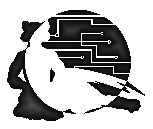Felitaur Site
Offerings
|
|
Week 1 Linux Administration CIS 126DL
Lecture Overview Index | Linux SysAdmin Homepage
| Overview |
|
After working as a simple user on a linux system for 4-5 weeks, we
now can start the first week of being a system administrator on a
linux distribution.
NOTE!! At this point you should be VERY familiar with the following
commands/concepts, as they will be necessary for the rest of this class,
and it will slow down the class significantly if we have to go over these
again and again. PLEASE PRACTICE THE FOLLOWING if you are not 100%
comfortable with them.
- vi and pico (You should know the basic commands and how
to use these
editors as second nature. VERY crucial).
- cd If I say "go to the etc directory" you should know to type
cd /etc
- permissions via chmod
- less and more
- grep and ps and piping them to less or more
If any of the above is difficult for you, go back to the appropiate topic
pages and practice these until you are able to use them like second
nature.
Goals:
- Installation of Linux to Removable Hard Drive (see
Linux System Administration for appropriate links.
- Go over the history of UNIX, Linux and the GNU and it's GPL (GNU
Public
License)
- Installation Issues
kickstart
- Hardware Support
- "Dangerous" commands
- Files used during bootup
- Runlevels and how to configure them
- Some configuration of your system
- Learn where help files are located in Linux
The following programs/files/directories will be discussed for this
topic:
:
- .bash_profile (in your user account home directory
- su lets you switch users, by default to the root user if you
know the root password
- /etc/inittab (controls which run level you use by default)
- /etc/fstab (controls what drives/etc. are mounted during bootup)
- /etc/rc.d/ (contains the init.d and rc#.d directories)
- /etc/rc.d/init.d/ (Directory that contains the start/stop scripts for
the entire system)
- /etc/rc.d/rc#.d (rc0.d-rc1.d...rc3.d...rc6.d, contain symbolic links
that point to the scripts in /etc/rc.d/init.d, if you see a S85httpd you
know that the httpd server (apache) is started in this runlevel, and if
you see a K15portmap, you know that portmap is killed in this level)
- chkconfig --level 3 servicename on/off
- service servicename start/stop/restart/status
- GUI tool to edit runlevels(redhat, system utilities, server settings,
services)
- init
- shutdown -h now (vs -h\r)
|
| Questions |
What is GNU? What does it have to do with UNIX and Linux?
What is open source software?
What big internet company put one of their
most popular software packages into the open source hat?
Why are winmodems a bad idea, even for windows?
What do the run levels represent? Where is the default run level set?
Why is it dangerous to run as root?
What is "dangerous" about the following commands?
- rm
- chmod
- chown
- chgrp
- fdisk
Why is the on/off switch just as potentially deadly to a UNIX/Linux system?
How do you turn off a service?
How do you make sure that service is not turned back on if you reboot?
Why do you need to edit the path in your .bash_profile file?
What are some of the Hardware Issues
with installing UNIX/Linux?
|
| Activities & Assignments |
- Open the .bash_profile file in your home directory (as a user, not
root) and change the line:
PATH=$PATH:$HOME/bin:
TO:
PATH=$PATH:$HOME/bin:/sbin:/usr/sbin
This will allow you to use commands like chkconfig and service and
shutdown without having to type /sbin/ in front of them.
- Use chkconfig to get rid of unwanted Services
- Using the file manager
- Learn how to "hunt" down information on Linux/Unix
- locate (need to run updatedb)
- find
- info
- man pages
- /usr/doc
- installed html pages (locate html | less)
- How-to's
- Linux Documentation Project
- Use of search engines such as www.google.com
- News groups at groups.google.com
- comp.os.linux.*
- comp.os.linux.security
- Use of main website provided by your distributor, in this case
www.redhat.com
|
| Resources |
|
|
|
|


